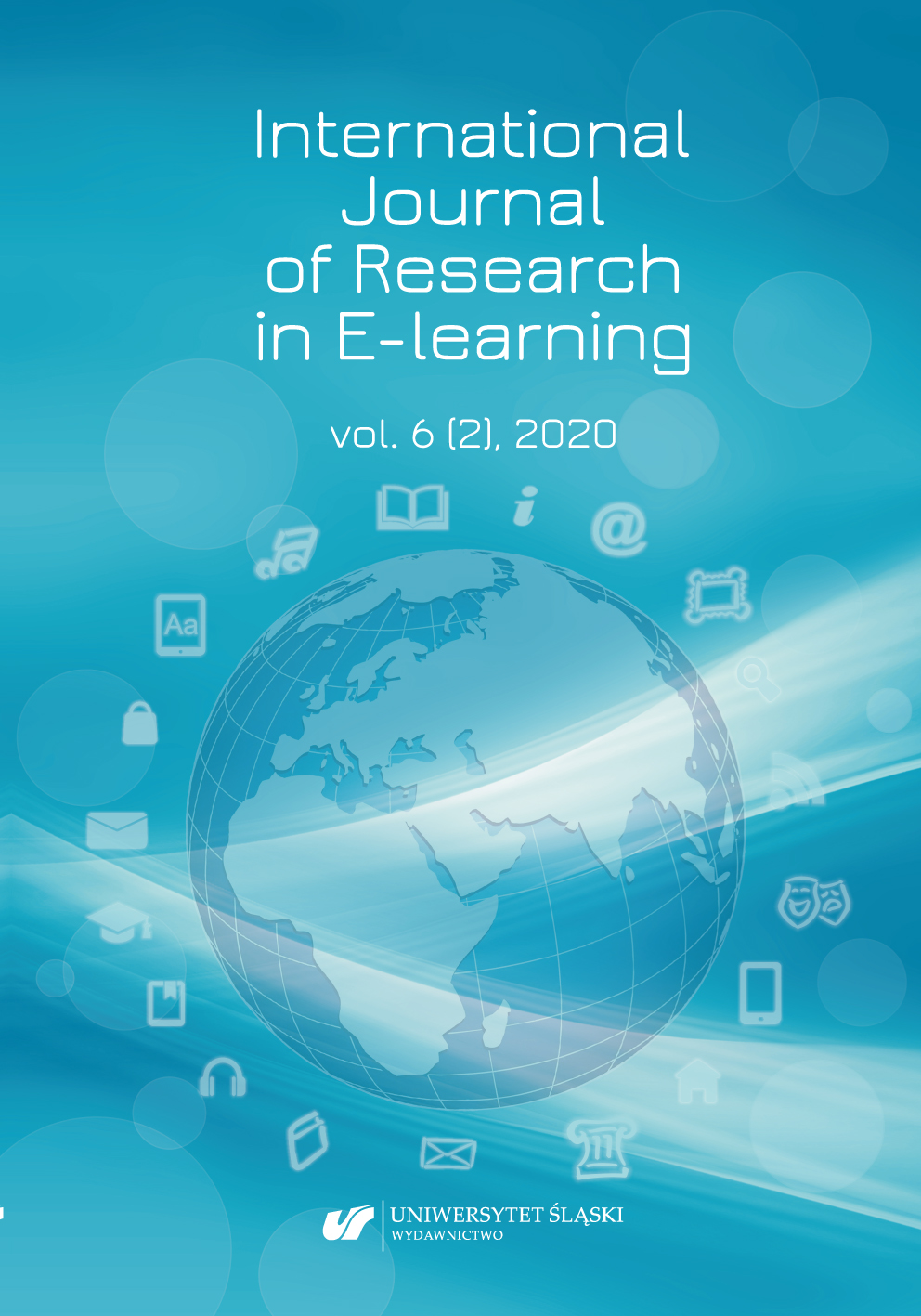Brennan, K., & Resnick, M. (2012, April). New frameworks for studying and assessing the development of computational thinking. In M. Resnick (Ed.), Proceedings of the 2012 annual meeting of the American Educational Research Association Vol. 1 (pp. 25–50). AERA Press.
Google Scholar
Chmielecka, E. (2013). The Bologna Process and the National Qualifications Framework for higher education. Studia BAS, 3, 107–134.
Google Scholar
Council Recommendation of 22 May 2018 on key competences for lifelong learning. Dz. U. L 394, 30.12.2006, p. 10. Retrieved from https://eur-lex.europa.eu/legal-content/EN/TXT/?uri=uriserv:OJ.C_.2018.189.01.0001.01.ENG
Google Scholar
Dewitt, D., Alias, N., &Siraj, S. (2015). Collaborative learning: Interactive debates using padlet in a higher education institution. Retrieved from http://eprints.um.edu.my/13630/
Google Scholar
European Commission (2017). Digital Agenda Scoreboard 2017. Retrieved from https://ec.europa.eu/digital–single–market/en/digital–scoreboard
Google Scholar
Field, J. (2000). Lifelong learning and the new educational order. Trentham Books, Ltd., Westview House. Retrieved from https://eric.ed.gov/?id=ED462589
Google Scholar
Fu, J. (2013). Complexity of ICT in education: A critical literature review and its implications. International Journal of Education and Development using ICT, 9(1), 112–125.
Google Scholar
Fuchs, B. (2014). The writing is on the wall: Using Padlet for whole–class engagement. LOEX Quarterly, 40(4), 7.
Google Scholar
Kopciał, P. (2010). Project Based E-learning – nowy model e-kształcenia. E–mentor, 3, 45–50.
Google Scholar
Long, J., Gardner, B., & Brown, J. (2011). Google hacking for penetration testers (Vol. 2). Elsevier. Retrieved from https://www.amazon.com/Google-Hacking-Penetration-Testers-Johnny/dp/1597491764
Google Scholar
Lowe, T., & Humphrey, O. (2018). A platform for partnership: A technology review of the Padlet sharing platform. The Journal of Educational Innovation, Partnership and Change, 4(1). Retrieved from https://cris.winchester.ac.uk/ws/portalfiles/portal/338383/11051105_Lowe_PlatformForPartnershipPadlet_withstatement.pdf
Google Scholar
Mitra, S. (2003). Minimally invasive education: a progress report on the “hole‐in‐the‐wall” experiments. British Journal of Educational Technology, 34(3), 367–371.
Google Scholar
Mitra, S. (2013). Beyond the hole in the wall: Discover the power of self–organized learning. Ted Conferences. Retrieved from https://www.amazon.com/Beyond-Hole-Wall-Discover-Self-Organized-ebook/dp/B0070YZSFQ
Google Scholar
Montessori, M. (2013). The Montessori method. Transaction Publishers.
Google Scholar
Morze, N., Spivak, S., & Smyrnova-Trybulska, E. (2014). Personalized educational environment – as one of the trends of modern education. In K. Kostolanyova & J. Kapounova (Eds.) Information and Communication Technology in Education (ICTE–2014) Conference Proceedings (pp. 158–166). University of Ostrava, Rožnov pod Radhoštěm.
Google Scholar
Noskova, T., Pavlova, T., Yakovleva, O., Smyrnova-Trybulska, E., & Morze, N. (2016). Modern education quality requirements and information technologies in academic teachers’ activities. International Journal of Continuing Engineering Education and Life Long Learning, 26(4), 434–459.
Google Scholar
OECD (2016).Wyniki PISA 2015. Retrieved from https://www.oecd.org/pisa/pisa–2015–results–in–focus.pdf; Komisja Europejska (2016).
Google Scholar
OJ C of 4 June 2018. EU Council Recommendation of 22 May 2018 on key competences for lifelong learning. Retrieved from https://www.prawo.pl/akty/dz–u–ue–c–2018–189–1,69055843.html
Google Scholar
Papert, S. (1993). The children’s machine: Rethinking school in the age of the computer. BasicBooks. Pedrycz, W., & Chen, S. M. (Eds.). (2014). Information granularity, big data, and computational intelligence (Vol. 8). Springer.
Google Scholar
PIAAC. (2016). The Programme for the International Assessment of Adult. Retrieved from https://www.oecd.org/skills/piaac/The_Survey%20_of_Adult_Skills_Reader%27s_companion_Second_Edition.pdf
Google Scholar
PISA. (2015). EU performance and initial conclusions regarding education policies in Europe. Retrieved from https://www.air.org/project/program-international-assessment-adult-competencies-piaac Raghupathi, W., & Raghupathi, V. (2014). Big data analytics in healthcare: promise and potential. Health information science and systems, 2(1), 3.
Google Scholar
Recommendation of the European Parliament and of the Council of 18 December. (2006). Key competences for lifelong learning.
Google Scholar
Regulation of the Minister of National Education of 14 February 2017. Dz.U. 2017 item 356 Regulation of the Minister of National Education of 14 February 2017. On the core curriculum of preschool education and the core curriculum of general education for primary schools, including students with moderate or severe intellectual disabilities, general education for first-degree vocational schools, general education for special schools preparing for work and general education for post-secondary schools. Retrieved from http://prawo.sejm.gov.pl/isap.nsf/DocDetails.xsp?id=WDU20170000356
Google Scholar
Resnick, M., & Robinson, K. (2017). Lifelong kindergarten: Cultivating creativity through projects, passion, peers, and play. MIT Press.
Google Scholar
Richmond, R. G. (2013). Introduction to Piaget. Routledge.
Google Scholar
WALAT, W. (2010). The search for a new model of education based on the ideas of cognitivism and constructivism. Edukacja–Technika–Informatyka, 1(2), 28–38.
Google Scholar
Wawrzyniak-Guz, K. (2016). Use of the Padlet Internet tool in teaching specialist technical vocabulary – work in poster preparation teams (case study). EduAkcja, 1(11), 71–80. Retrieved from https://eduakcja.eu/files/pdf/113.pdf
Google Scholar
Zaldívar, J. I. (2015). Deschooling for all? The thought of Ivan Illich in the era of education (and learning) for all. Foro de Educación, 13(18), 93–109.
Google Scholar
Zhi, Q., & Su, M. (2015). Enhance collaborative learning by visualizing process of knowledge building with Padlet. In 2015 International Conference of Educational Innovation through Technology (EITT) (pp. 221–225). IEEE.
Google Scholar
Zikopoulos, P., & Eaton, C. (2011). Understanding big data: Analytics for enterprise class hadoop and streaming data. McGraw–Hill Osborne Media, p. 43.
Google Scholar


 https://doi.org/10.31261/IJREL.2020.6.2.08
https://doi.org/10.31261/IJREL.2020.6.2.08
